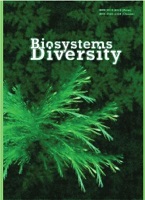The effect of polystyrene foam in different doses on the blood parameters and relative mass of internal organs of white mice
The effect of polystyrene foam in different doses on the blood parameters and relative mass of internal organs of white mice
Author(s): M. V. Bilan, M. A. Lieshchova, V. V. BrygadyrenkoSubject(s): Agriculture, Human Ecology, Environmental interactions
Published by: Дніпропетровський національний університет імені Олеся Гончара
Keywords: microplastic; organ mass index; blood biochemical parameters; albumins; globulins; blood enzymatic activity;
Summary/Abstract: Due to their durability, versatility and economy, plastic products are widely used in all spheres of human life. Despite the inertness of polymers, recent studiesshow the ability of microplastic to overcome natural tissue barriers, accumulate in the animal’s body, affect metabolism and change the intestinal microbiota, negatively affecting it. In a 42-day experiment, changes in the internal organs’ relative mass, blood biochemical and morphological parameters of white mice were established under the influence of different doses of polystyrene foam in their diet. Four groups of white mice consumed crushed polystyrene foam particles (10%, 1% and 0.1% by weight of the feed, control group without the addition of polystyrene foam). At the end of the experiment, the morphofunctional state of the internal organs was determined by the organ mass index and blood biochemical parameters. Adding crushed polystyrene foam to the feed in an amount of 1% causes a significant decrease in the mass index of the heart and stomach, 10% – only the heart, and 0.1% – does not affect this indicator. Polystyrene foam had a significant effect on blood biochemical parameters, regardless of the dose, causing an increase in the activity of aspartate aminotransferase against the background of a decrease in the activity of alkaline phosphatase. The content of total bilirubin, urea, urea nitrogen and cholesterol decreased, and the concentration of creatinine and total protein increased (due to the albumin fraction). The use of crushed polystyrene foam in mice did not cause significant changes in the blood morphological composition, except for a dose-dependent increase in the number of monocytes. In the future, it is planned to determine histological, histochemical and immunohistochemical changes in the organs of laboratory animals under the influence of plastic in a laboratory experiment.
Journal: Biosystems Diversity
- Issue Year: 30/2022
- Issue No: 4
- Page Range: 436-441
- Page Count: 6
- Language: English

